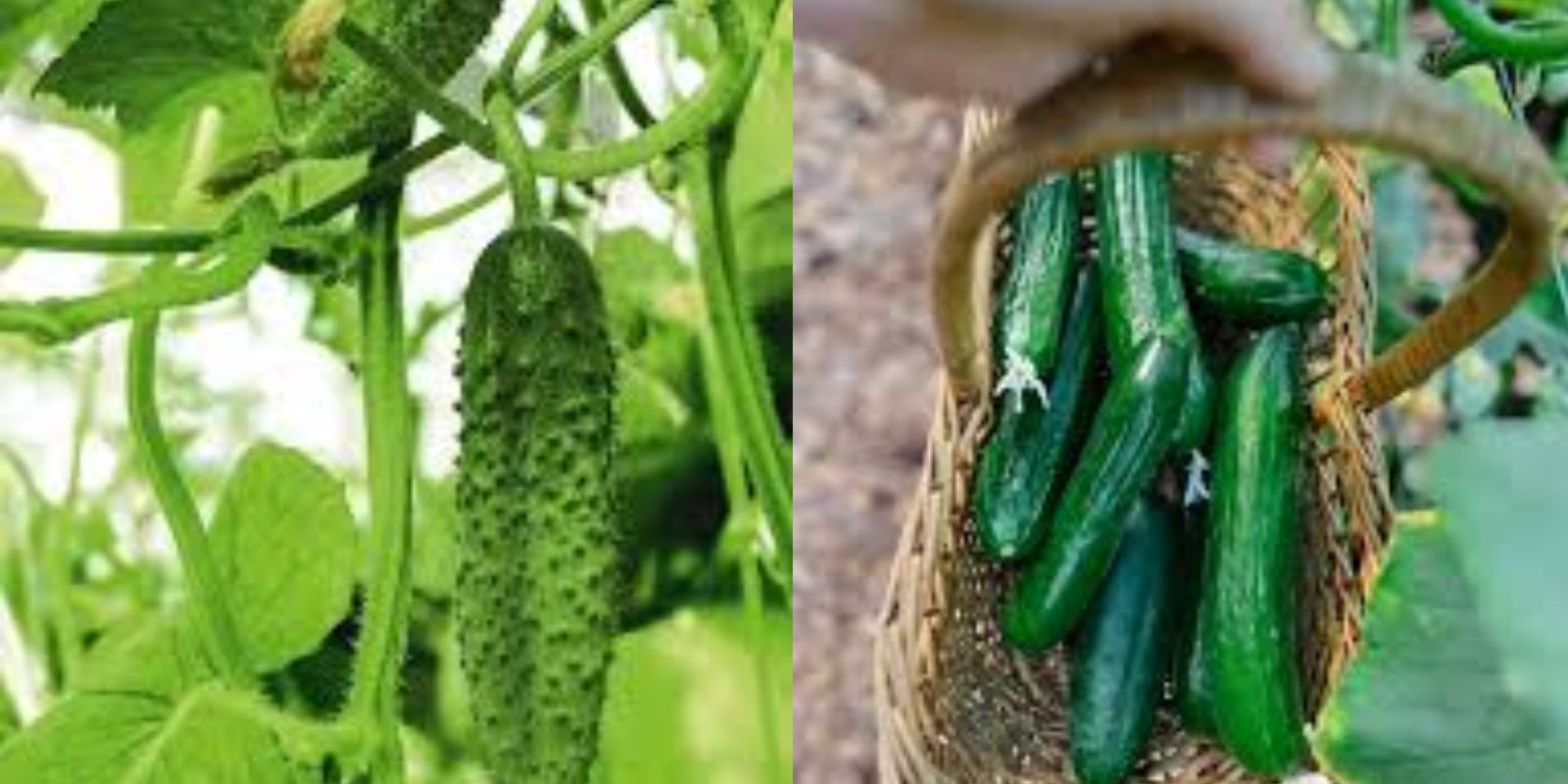Introduction
Cucumbers are a beloved staple in home gardens around the world. They’re versatile, refreshing, and pack a satisfying crunch in salads, pickles, and so much more. But while cucumbers can be relatively easy to grow, they have specific needs that, if unmet, can lead to poor growth, bitter fruits, or even a failed crop. In this guide, we’ll dive into 10 essential tips to help you cultivate the healthiest, most productive cucumber plants possible. Whether you’re a beginner or an experienced gardener, these insights will ensure you enjoy a thriving cucumber harvest.
1. Choose the Right Variety for Your Space
Cucumbers come in a variety of types, broadly divided into bush and vining varieties. Bush cucumbers are compact and ideal for containers or small garden spaces. Vining cucumbers, on the other hand, need more room to sprawl or a trellis to climb. Consider the type of garden you have before picking a cucumber variety.
Tip: For smaller gardens or containers, try bush varieties like ‘Spacemaster.’ If you have more space, explore vining varieties like ‘Marketmore’ or ‘National Pickling’ for a classic cucumber taste.
2. Give Them Full Sunlight
Cucumbers are sun-loving plants and need ample light to thrive. Aim for at least 6 to 8 hours of direct sunlight each day. Insufficient sunlight can lead to weaker plants and fewer fruits, so make sure to plant them in a sunny spot.
Tip: For container-grown cucumbers, consider moving the pots to different sunny spots if needed, especially if you have a limited sun-exposure area.
3. Use Well-Drained, Nutrient-Rich Soil
Cucumbers require well-drained soil rich in organic matter. The soil should be loose to allow for good root growth and to prevent water from pooling around the roots, which can lead to rot. Adding compost or aged manure can boost the nutrient levels, making for healthier, more vigorous plants.
Tip: Aim for slightly acidic to neutral soil, with a pH range of 6.0 to 7.0. Testing soil before planting can ensure you’re within this range, which is optimal for cucumbers.
4. Provide Trellises for Vining Varieties
If you’re growing vining cucumbers, providing a trellis or support structure is key. Trellising helps keep the plants off the ground, reducing their exposure to pests, diseases, and moisture-related issues. Additionally, trellised plants tend to produce straighter cucumbers and make harvesting easier.
Tip: Use a sturdy trellis or mesh. As the vines grow, gently guide them up the support structure, securing them if needed with soft ties to prevent breakage.
5. Water Consistently and Correctly
Cucumbers need a consistent water supply to avoid bitterness and ensure even growth. Water deeply, reaching the roots, but avoid waterlogging the soil. Cucumbers benefit from a steady, regular watering schedule, especially during hot or dry periods.
Tip: Water at the base of the plants early in the morning to reduce the chance of fungal growth and prevent leaves from getting wet, which can increase disease risk.
6. Add Mulch to Retain Moisture
Mulching is an effective way to retain moisture in the soil, prevent weeds, and regulate soil temperature, especially during the warmer months. A layer of mulch—such as straw, shredded leaves, or compost—around the base of the plant can help keep the roots cool and hydrated.
Tip: Apply a 2-3 inch layer of mulch around the plant, leaving some space around the stem to prevent stem rot and allow air circulation.
7. Feed with a Balanced Fertilizer
Cucumbers are relatively heavy feeders and benefit from consistent fertilization. A balanced fertilizer, ideally one with equal amounts of nitrogen, phosphorus, and potassium, will encourage vine and fruit development. Start feeding them every couple of weeks once they begin to grow.
Tip: Avoid over-fertilizing with high-nitrogen products, as this can lead to excessive foliage growth at the expense of fruit production. Organic options like compost tea or fish emulsion can be beneficial for a steady nutrient supply.
8. Watch for Common Pests and Diseases
Cucumbers can be prone to pests like aphids, cucumber beetles, and spider mites, as well as diseases like powdery mildew and bacterial wilt. Keep an eye on your plants, regularly checking under the leaves and around the stems. Natural deterrents like neem oil, insecticidal soap, or companion planting with marigolds can help keep pests at bay.
Tip: Remove any infected or damaged leaves promptly to prevent the spread of disease. Companion plants like nasturtium and marigold can help repel pests.
9. Harvest Regularly for Continued Production
Picking cucumbers frequently encourages the plant to continue producing new fruits. The ideal size for harvesting depends on the variety, but in general, pick them when they are firm, evenly colored, and before they become overly large and seedy.
Tip: Use sharp scissors or garden shears to cut cucumbers from the vine, as pulling or twisting can damage the plant. Harvest in the morning for the best flavor and texture.
10. Rotate Crops Annually
Rotating crops is an essential step in preventing soil-borne diseases and pests that might build up in the soil year after year. If you plant cucumbers in the same spot every season, they’re more susceptible to diseases and pests that target cucurbits.
Tip: Rotate cucumbers to a different part of your garden every year, and avoid planting them in areas where you recently grew other plants in the same family, such as melons, squash, or pumpkins.
Conclusion
Growing cucumbers successfully requires a bit of attention to detail and consistency in care. From choosing the right variety to providing proper support, watering wisely, and ensuring they get plenty of sunlight, these 10 tips cover the basics of thriving cucumber cultivation. By following these steps, you’ll have a continuous harvest of fresh, crunchy cucumbers all season long.
Have you tried growing cucumbers? Share your experiences and any unique tips you’ve discovered in the comments! Happy gardening! 🌱🥒
#GrowCucumbers #GardenTips #HomeGardening #CucumberHarvest #OrganicGardening #GreenThumb

